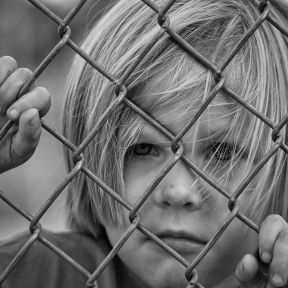The word “trauma” literally means wound, shock, or injury. Psychological trauma is a person’s experience of emotional distress resulting from an event that overwhelms the capacity to emotionally digest it. The precipitating event may be a one-time occurrence or a series of occurrences perceived as seriously harmful or life-threatening to oneself or loved ones. People process experiences differently, and not everyone has the same reaction to any event; what one person experiences as trauma may not cause distress for another.
Traumatic experiences undermine a person's sense of safety in the world and create a sense that catastrophe could strike at any time. Parental loss in childhood, motor vehicle accidents, physical violence, sexual assault, military combat experiences, earthquakes, the unexpected loss of a loved one—any sudden, violent disruption—are events that can lead to trauma. People typically replay the experience in their mind over and over and continually think about what happened. The experience leads to changes in brain function marked by a hypersensitivity to threats.
Children as well as adults are susceptible to trauma. Shock, fear, anger, sadness, difficulty concentrating, and a sense of helplessness are common features of the immediate trauma response. Children may suddenly develop behavioral problems and exhibit clinginess. However, the effects usually abate over time, and the vast majority of people recover from trauma. Active coping skills and strong social support are important in mitigating symptoms and preventing the longer-term effects of trauma on mental health. It is estimated that only 3 percent to 10 percent of people who undergo a traumatic experience have persistent mental health difficulties known as post-traumatic stress disorder (PTSD).
There are several different types of trauma, with differing consequences for mental health.
Acute trauma reflects intense distress in the immediate aftermath of a one-time event of short duration. The reaction itself is short-term, resolving on its own or with the help of counseling. A car crash, physical or sexual assault, the sudden death of a loved one, or even a medical emergency can create acute trauma.
Chronic trauma refers to the harmful effects of events that are repeated or prolonged. It can develop in response to persistent bullying, neglect, abuse (emotional, physical, or sexual), and domestic violence. Because of its repeated nature and inescapability, chronic trauma often has serious mental health consequences for individuals.
Complex trauma can arise from experiencing repeated or multiple traumatic events of differing types from which there is no possibility of escape, such as repeated child abuse. The sense of being trapped is a feature of the experience. Like other types of trauma, it can undermine a sense of safety in the world and beget hypervigilance, and constant (and exhausting!) monitoring of the environment for the possibility of threat. Complex trauma experienced in childhood has been associated with the development of borderline personality disorder as well as PTSD.
Secondary, or vicarious, trauma arises from exposure to other people’s suffering and can strike those in professions that are called on to respond to injury and mayhem, notably physicians, first responders, and law enforcement. Over time, such individuals are at risk for compassion fatigue, whereby they avoid investing emotionally in other people in an attempt to protect themselves from experiencing distress.
Adverse Childhood Experiences (ACEs) cover a wide range of difficult—and potentially traumatic—situations that children under the age of 17 either directly face or witness while growing up before they have developed effective coping skills. ACEs typically disrupt the nurturing bond between children and caregivers and can negatively affect the normal course of development; the emotional injury can last long into adulthood. The loss of a parent; neglect; emotional, physical, or sexual abuse; and divorce are among the most common types of adverse childhood experiences. Research has shown that the more ACEs a person experiences, the greater their risk for future mental and physical health problems. Child health experts are increasingly attuned to checking for ACEs; it is believed that mitigating or preventing ACEs could prevent many future cases of depression, heart disease, and other common disorders.
Based on a survey of nearly 69,000 adults in 24 countries, the World Mental Health Survey Consortium found that 70 percent of adults have had at least one experience of trauma in their life. Five types of events—witnessing death or serious injury, experiencing the unexpected death of a loved one, being mugged, being in a life-threatening automobile accident, and experiencing a life-threatening illness or injury—account for more than half of the instances of trauma exposure. Trauma, however, is subjective. People can experience the same event but whether it is traumatic depends on the coping resources and other factors they bring to the experience.
Disturbing events activate the amygdala, a structure in the brain responsible for detecting threats. It responds by sending out an alarm to multiple body systems to prepare for defense. The sympathetic nervous system jumps into action, stimulating the release of adrenaline, noradrenaline, and stress hormones that prepare the body for a fight-flight-or-freeze response. Short-term fear, anxiety, shock, and anger/aggression are all normal responses to trauma. Such negative feelings dissipate as the crisis abates and the experience fades from memory, but for some people, the distressing feelings can linger, interfering with day-to-day life.
Sufferers of long-term trauma may develop emotional disturbances, such as extreme anxiety, anger, sadness, survivor’s guilt, disassociation, the inability to feel pleasure (anhedonia), or PTSD (post-traumatic stress disorder). The amygdala becomes hyperactive, its overreaction to minor perturbations leading to an outpouring of stress hormones. Living in defense mode, and ever-vigilant to the possibility of threat, people may experience ongoing problems with sleep or physical pain, encounter turbulence in their personal and professional relationships, and feel a diminished sense of self-worth.
Positive psychological changes after trauma are also possible when people acknowledge their difficulties and see themselves as survivors rather than victims of unfortunate experiences. These can include building resilience, the development of effective coping skills, and the development of a sense of self-efficacy. Some people may undergo post-traumatic growth, forging stronger relationships, redefining their relationships with new meaning and or spiritual purpose, and gaining a deeper appreciation for life. It may sound contradictory, but post-traumatic growth can exist right alongside PTSD.
Many factors are associated with resilience to trauma. Researchers have identified attributes of individuals that prevent the development of PTSD, and they have also found that various features of social context can provide important protections. Studies show that six psychosocial factors promote resilience in individuals: optimism, cognitive flexibility, active coping skills, maintaining a supportive social network, attending to one's physical well-being, and embracing a personal moral compass and sense of purpose. In addition, establishing a sense of safety is critical for overcoming the effects of trauma.
It is important to remember that most people will recover from the feelings of distress that typically accompany a traumatic experience. Symptoms will abate with time—for some, it will take days; for others, weeks; and still others, a few months. Two of the most important elements fostering recovery are the establishment of a sense of safety and the provision of social support.
In addition, lifestyle factors can promote recovery. Eating healthy, exercising, avoiding alcohol and drugs, getting enough sleep, seeing loved ones regularly, and engaging in self-care can help relieve trauma symptoms. Talking about the event, especially sharing feelings with others who underwent the experience, may also be helpful.
Often in the immediate wake of catastrophes and other traumatic events, the desire to help people manage their distress and to prevent future psychological problems has led to the practice of psychological debriefing, in which individuals are encouraged to recollect the event. However, research finds that debriefing is not only not effective, it can actually be harmful, increasing the risk for eventual depression and PTSD. It is not considered an appropriate mental health intervention in the immediate aftermath of trauma.
Psychological intervention can be helpful for some people in the wake of trauma. Those who stand to benefit are individuals whose symptoms of distress show no signs of abating after one month or whose symptoms become so severe they interfere with everyday functioning. Psychotherapy can help a person build resilience, develop coping skills, and address unresolved feelings that are keeping them stuck. Exposure therapy and cognitive reappraisal therapy are two of the more reliable treatments for trauma and PTSD.
One of the best ways to support someone who has experienced trauma is to spend time with them and not avoid them. Companionship can be healing.
It is also important to:
• Acknowledge the event and their reaction to it.
• Listen to the person if they want to talk about it, even if they want to repeat details many times. But don’t force them to talk about it.
• Accept their feelings; don’t judge them.
• Encourage them to join you for fun and positive activities.
• Keep reaching out to them.
What not to do:
• Do not force someone to talk.
• Do not ask intrusive questions.
• Avoid asking questions that begin with “why”; they can sound victim-blaming.
• Do not give advice unless asked specifically.
• Do not resort to trivializing cliches such as “everything happens for a reason” or “I know just how you feel.”
There are many myths about trauma that impede understanding and care. For example, there is a popular assumption that all childhoods are traumatic, which causes people to mistake ordinary hardship or distress for genuine trauma. While this view of trauma may seem initially validating of a difficult experience, it can quickly lead individuals to question their own experiences growing up and the adequacy of their caretakers. Viewing ordinary, if imperfect, childhood experiences as examples of trauma not only misunderstands the nature of experience but misstates the capacity for resilience that most people have.
Another common misconception about trauma is that it will destroy your life forever. Some people who experience trauma assume the identity of a victim, expecting the world to harm them and seeing slights where they don't exist; this tendency has helped to create a culture of victimhood that does more harm than good by ignoring people's capacity for growth through challenge. Letting go of the victim label can enable people to see themselves instead as survivors, allowing them to grow and feel optimistic about the future.
It is generally assumed that talking about negative emotions and experiences leads to healing. However, with traumatic events, especially large-scale disasters or wars that impact thousands of people, data show that rehashing painful memories can be dangerous. As a result, treatments such as psychological debriefing are best deployed carefully and on a case-by-case basis. Everyone’s journey through trauma will be different.















